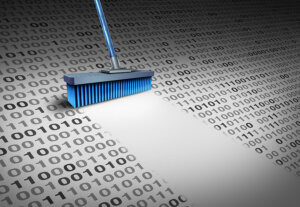 The reports generated by your ERP software are only as good as the data it collects and contains. Annual data cleaning should be part of your year-end tasks. Not only will it help your company with compliance and accounting, but it will also help your ERP software perform better.
The reports generated by your ERP software are only as good as the data it collects and contains. Annual data cleaning should be part of your year-end tasks. Not only will it help your company with compliance and accounting, but it will also help your ERP software perform better.
What Is Data Cleaning?
Data cleaning refers to organizing and analyzing the existing data contained in your ERP software. It may also refer to scrutinizing data files to ensure there are no duplicate records or incomplete records.
Most businesses collect a large amount of data. Such data includes:
- Communication records, including emails, text messages, social media posts, and cell phone calls. Certain industries may require communication records be kept for a specific time period such as one to three years. This generates a large amount of data.
- Sales figures, which are a critical component of any business. Sales data may include the SKU, product and item description, quantity, and more. Again, some businesses may collect even more data, including distribution channel, profitability, price points and sales by price points, and more.
- Customer records include names, addresses, phone numbers, email addresses, and similar basic information. Other data may be collected and appended to the basic customer record by customer service.
- Human resources and personnel files, which also contain names, addresses, phone numbers, and other information. These records may also contain highly sensitive data, such as social security numbers, and should be treated with a great deal of care and the highest degree of security.
- Inventory data, which add more product information to your system.
If the last time you cleaned your data was “never,” then it’s past time to perform a thorough data cleansing.
Why Conduct Data Cleansing?
The data contained in your ERP system isn’t static. It’s ever-changing, and sometimes, errors or mistakes creep into the data files. Consider the following scenarios:
- You receive a supply of silver widget, item number A-1234, to be scanned into receiving. The clerk scanning the widgets looks up “silver widgets” but doesn’t see the item under the letter “s” in the database. That’s because widgets are filed under w: Widgets, Silver. But the person doesn’t know that. They enter the information manually. Now you have duplicate records for “silver widgets” and “widgets, silver,” and the potential for erroneous stock calculations.
- Jane Smith ordered products from your company a few years ago. Now she’s back, but she can’t remember her username and password to log into the distributor portal. She sets up a new account under the name Jane E. Smith at the same company name and location. Now you have two records, not quite identical, for the same person and company.
- The sales department allowed Customer ABC to exchange a product but failed to log it into the system as an exchange. They also didn’t say why the customer returned the product, which is supposed to be entered into the ERP software, too. The company’s customer records indicate Customer ABC ordered that product in the past, so you keep marketing to them hoping to make another sale. All your marketing pieces end up in the trash because Customer ABC really didn’t like the original product in the first place, but the marketing team doesn’t know that because Sales didn’t update the files.
As you can see from these examples, errors can easily occur in even the best-managed data files.
Cleaning data files helps boost ERP software efficiency in many ways. Data cleansing removes duplicate records and flags potential duplicates for manual review. It helps update and improve database efficiency by removing extraneous data and ensuring it is updated and consistent. Consistent data is easier for systems to parse, retrieve, and use in various ways, including creating reports.
Ready for Some End of Year Cleaning?
Start any data cleansing project by making a backup copy of your database. Then, proceed slowly, determining what type of cleaning you intend to do. Finding duplicate records may be the easiest task to perform. Specialized data management companies can perform basic data cleaning for you, returning the file so you can import squeaky-clean data directly into your ERP. Then, it’s your job to help keep data clean and free from errors by training your team on the importance of accurate data entry.
Address Validation From Acumatica Cleans up CRM Addresses
Address Validation from Acumatica cleans up the addresses in your CRM. This cloud-based service, which is built into the Acumatica xRP platform, works with a single click. Addresses are validated against multiple external databases used by UPS, FedEx, and USPS. This is an easy way to clean up data if you’re using Acumatica, one of the best enterprise resource systems for small to mid-sized businesses.
Emerald TC
Emerald TC provides software and consulting for manufacturing companies. We can help you choose the right accounting software, ERP system, payroll, or other software for your needs. Contact us or call 678-456-6919 for more information.

